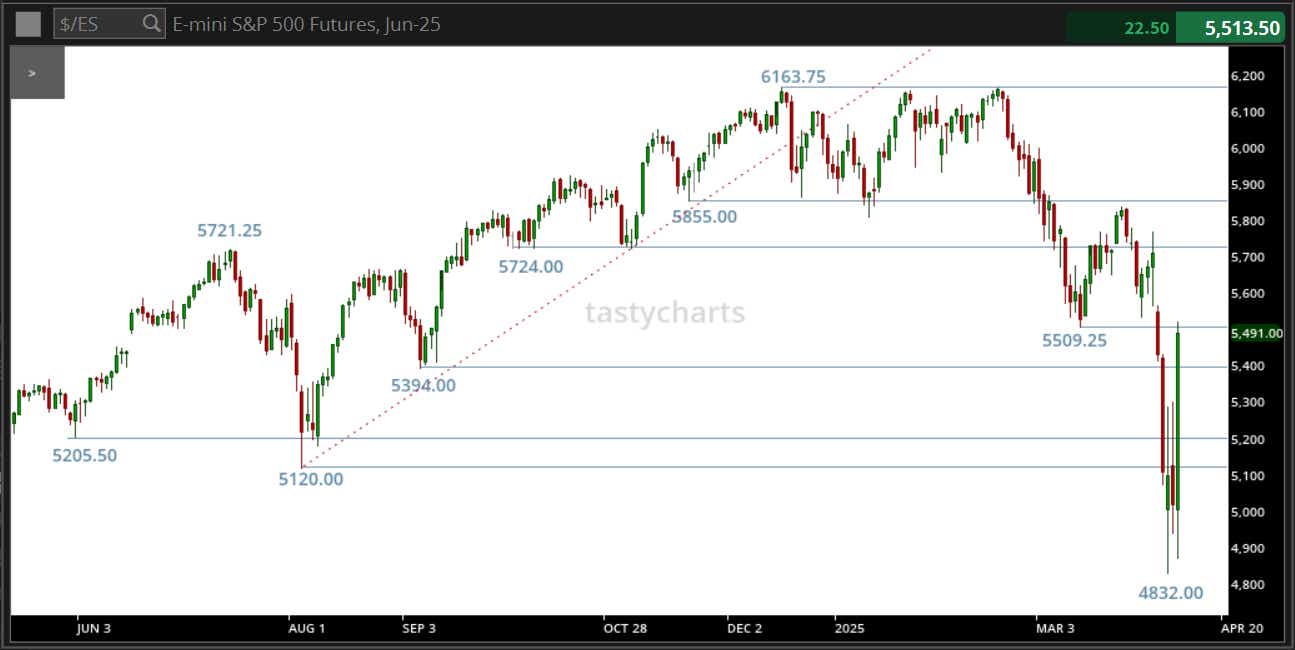U.S. CPI Preview: Will Stock Markets Keep Soaring as Inflation Cools?

U.S. CPI Preview: Will Stock Markets Keep Soaring as Inflation Cools?
By:Ilya Spivak
Will cooling U.S. inflation give the markets something else celebrate?
- Stocks launch a historic rally after President Trump softens tariff rollout.
- FOMC minutes show fear of an inflation shock is holding back rate cuts.
- Soft U.S. CPI data might lift bonds but put stocks back under pressure.
A burst of positivity struck financial markets as U.S. President Donald Trump finally showed a willingness to respond to investors’ pleading. An update on Truth Social unveiled a 90-day pause on imposing reciprocal tariff rates above the 10% baseline. China is to be excluded from the reprieve and faces a tariff rate of 125%.
Wall Street stormed higher on the news. The bellwether S&P 500 stock index is on pace to finish the day up nearly 9.4%, marking its biggest one-day rally since March 24, 2020. That was the first day of what would turn out to be a historic two-year rally from panic lows amid the COVID-19 outbreak.
Stock markets surge as President Trump softens tariff plans
Minutes from the March meeting of the Federal Open Markets Committee (FOMC) – the Federal Reserve’s policymaking group – revealed a deep concern about inflation, with “almost all participants” viewing the risks as tilted to the upside. This was chalked up to the fear that the inflationary effects from tariffs could be more persistent than projected.

The markets seemed un-phased, shrugging off the Minutes’ implicitly hawkish overtones. Inflation expectations implied in bond market pricing – so-called “breakeven rates” – have plunged over the past week. This means the markets are looking through a price shock from the tariffs to the recession it may cause, and betting that the malaise will prevail.
In all, the markets still price in 134 basis points in Fed rate cuts through the end of 2026. That falls broadly in line with where expectations have stood since last week’s tariff policy shock, which amounted to the markets betting on one additional cut beyond the 100bps already on the menu from Fed officials.
A change in sequencing is clear, however. Yesterday, the markets saw four standard 25bps cuts in 2025 and at least one more next year. After Mr. Trump’s tariff tweak, three cuts remain for this year and at least two are now seen for 2026. That is, the sense of urgency has eased somewhat.
Can markets keep the rebound going on U.S. CPI inflation data?
The spotlight now turns to U.S. consumer price index (CPI) data, which is expected to show that inflation slowed in March. Headline price growth is seen ticking down to 2.6% year-on-year, the lowest since October. The core rate excluding volatile food and energy prices is penciled in for a return to 3% for the first time since April 2021.
.png?format=pjpg&auto=webp&quality=50&width=759&disable=upscale)
A soft result would extend for a third month signs of decelerating price pressure in three- and six-month trend averages that the Fed closely monitors to modulate its policy stance. Taken alongside sinking breakeven rates, this may answer the FOMC’s sticky inflation in the negative. Signs of weakening growth may be reinforced all the same.
President Trump’s would-be reprieve clearly improved speculative sentiment, but it did nothing to address the uncertainty around policy consistency and implementation that has been at the heart of the markets’ woes. Taken together, this might make for a CPI report that hurts stocks by reiterating recession risk, even as it helps bonds rise amid rate cut bets.
Ilya Spivak, tastylive head of global macro, has 15 years of experience in trading strategy, and he specializes in identifying thematic moves in currencies, commodities, interest rates and equities. He hosts Macro Money and co-hosts Overtime, Monday-Thursday. @Ilyaspivak
For live daily programming, market news and commentary, visit tastylive or the YouTube channels tastylive (for options traders), and tastyliveTrending for stocks, futures, forex & macro.
Trade with a better broker, open a tastytrade account today. tastylive, Inc. and tastytrade, Inc. are separate but affiliated companies.
Options involve risk and are not suitable for all investors. Please read Characteristics and Risks of Standardized Options before deciding to invest in options.